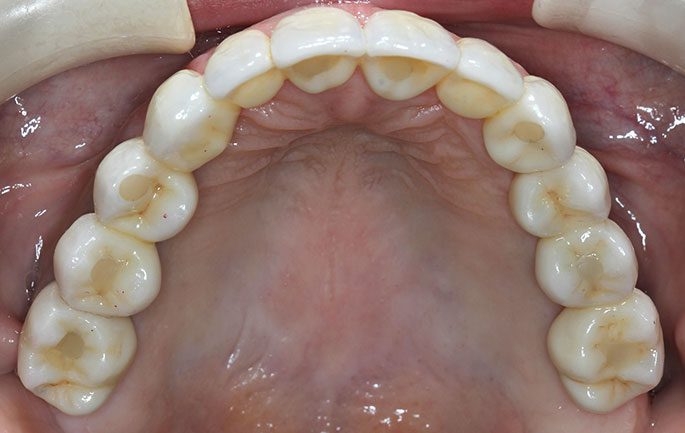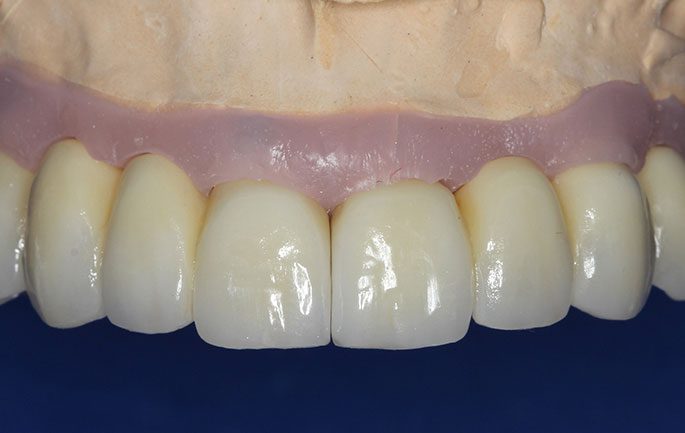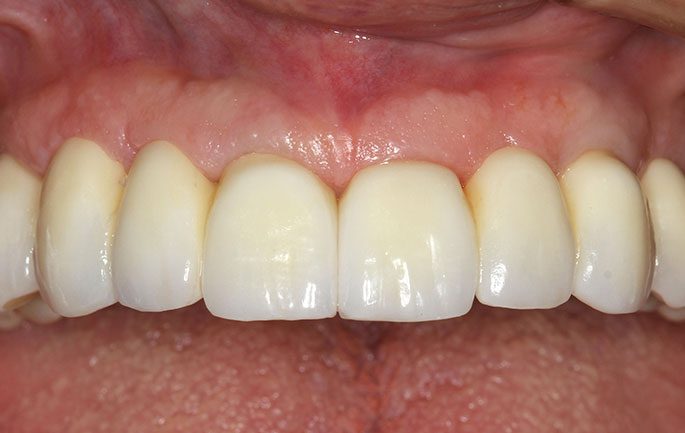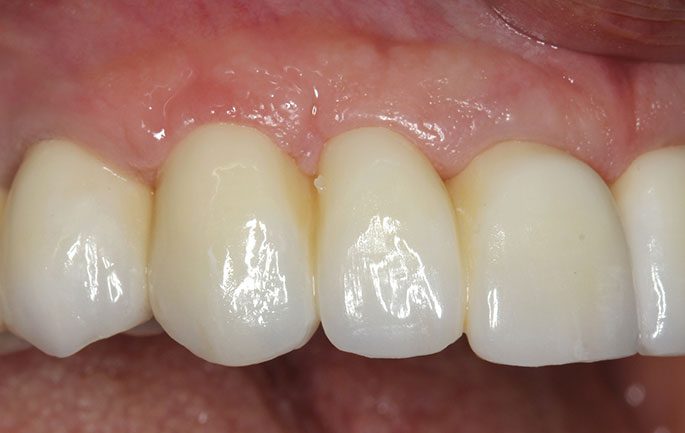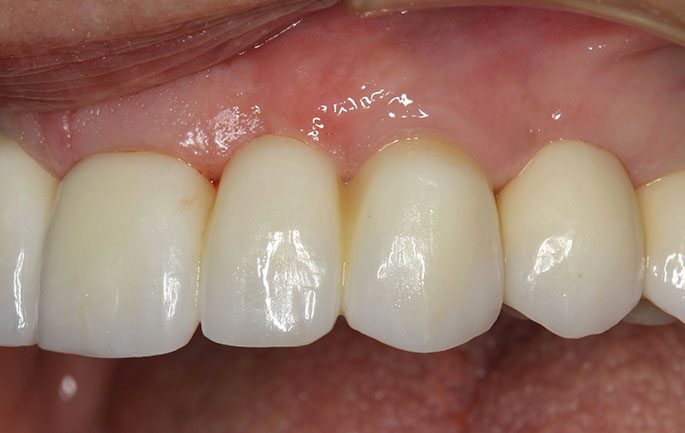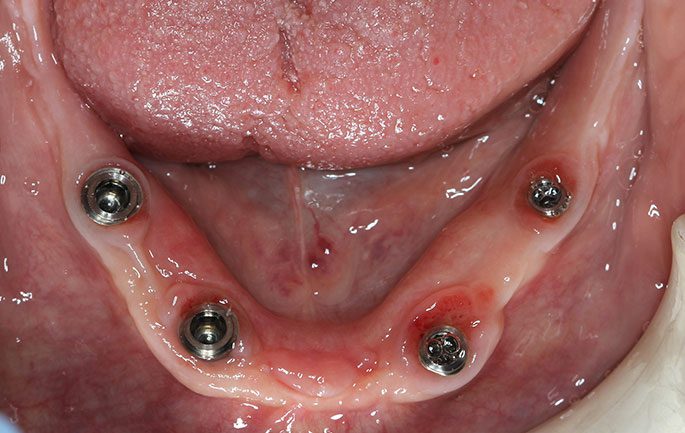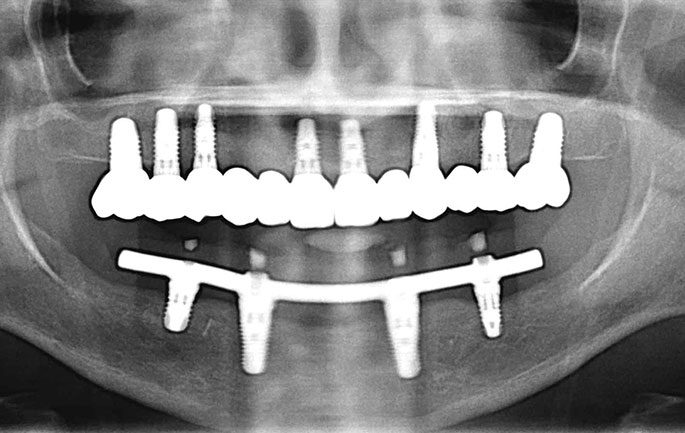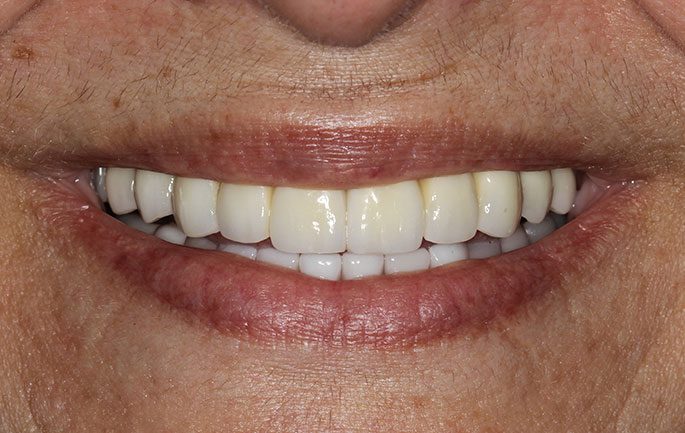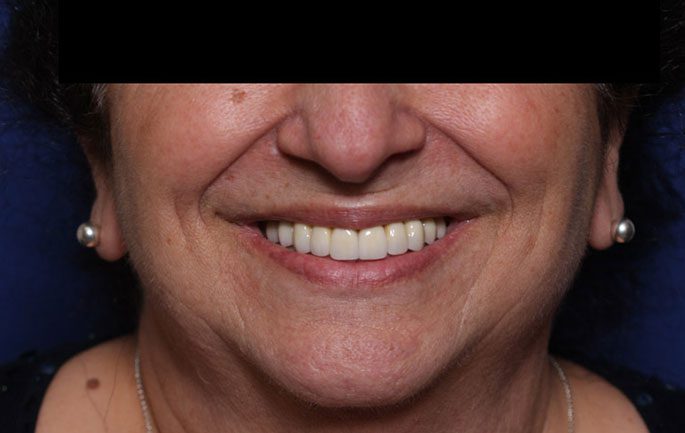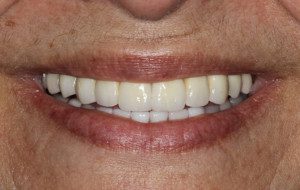
1 of 19
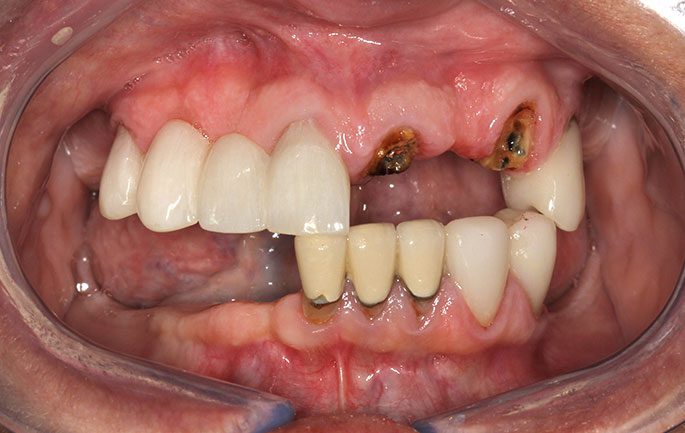
Candidates for Full Mouth Implant Treatment often have but a few teeth left when they finally decide to seek treatment. In this case, the patient had eleven teeth that were serving her fairly-well until two teeth supporting a bridge fractured at the gumline. As is often the case, this was the catalyst to seeking consultation.
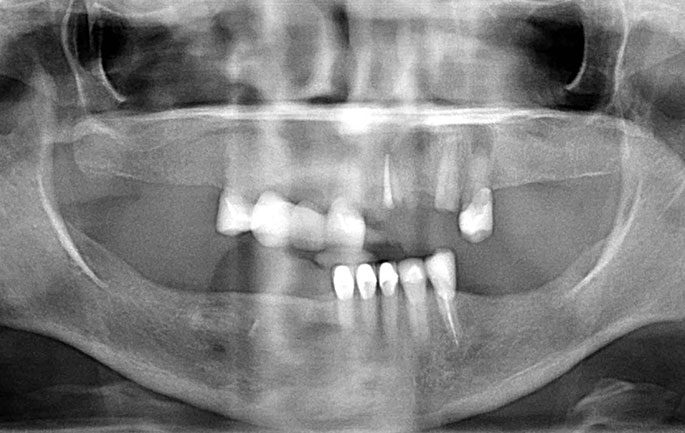
Panoramic radiograph of patient. Very fortunately, she had outstanding bone even though she had been missing teeth for many years. This is often not the case. Most patients lose bone continuously after teeth are removed. There are two factors that cause bone loss after tooth extraction: 1) Genetics – each person resorbs bone (bone melts away) at a different rate. The very lucky lose bone at a very slow rate while others can lose bone so quickly that implants are not possible (without bone grafting) in as short as 9 months. 2) Pressure – from removable prostheses. A denture or partial denture that rests on the gum tissue applies pressure on the bone causing to resorb (melt away).
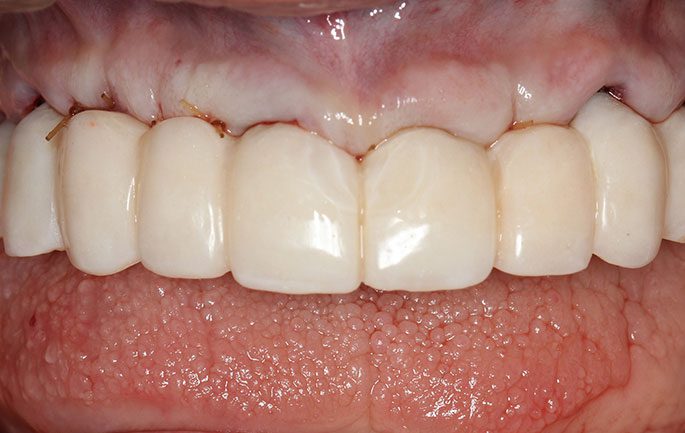
In a one-day surgical appointment, all teeth are removed, implants are placed, and a temporary bridge fabricated. This is an amazing treatment! The patient comes in with 11 compromised teeth and leaves with 24 teeth on implants. These teeth are plastic temporaries but serve as the prototype for the future permanent teeth. Patients have between 2 and 6 months to decide what they like and what they don’t. Improvements are made as the permanents are fabricated.
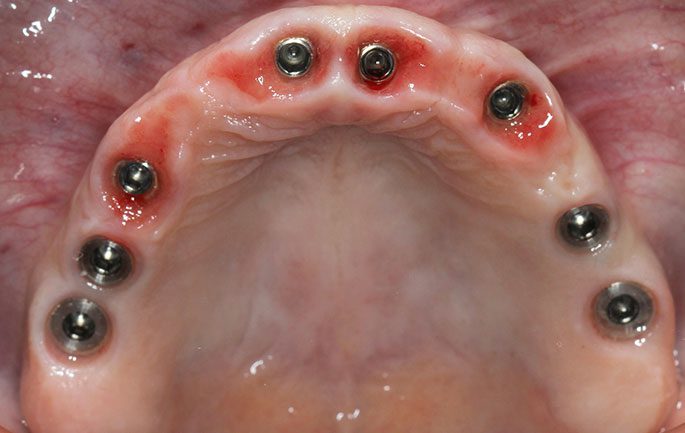
For this type of treatment, implant placement needs to be very precise. If the permanent implant bridge(s) are to look ideal the implants must be nearly perfect. Only experience and careful surgical technique can yield these results.
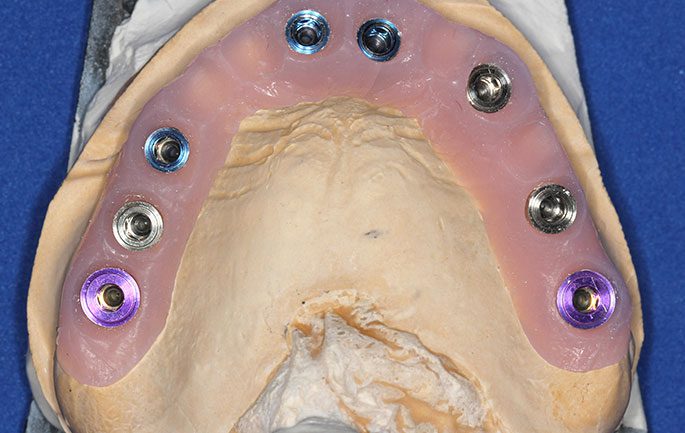
Impressions are made of the implants and a working model made from implants replicas, a soft tissue replica and stone.
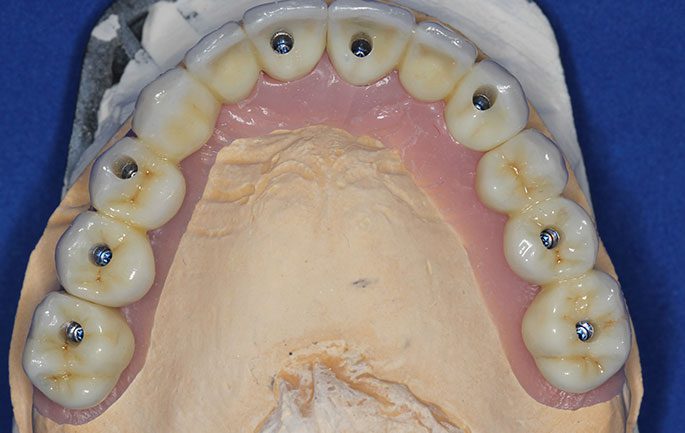
The Zirconia bridges are then finalized after numerous records and try-in appointments. Getting it exactly right takes time. During this phase the patient always wears the temporaries between visits.
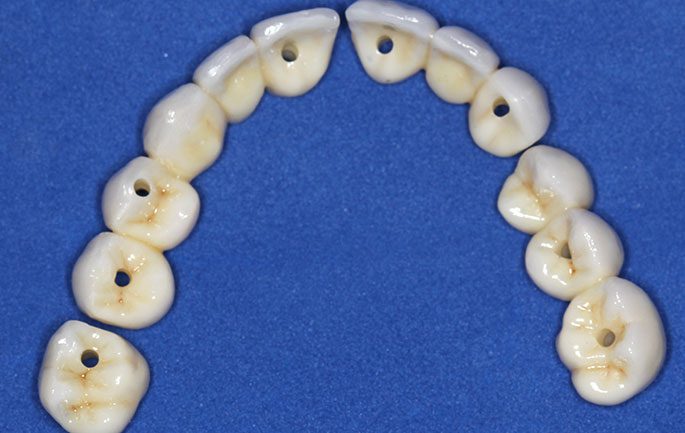
This picture shows the tremendous advantage of this treatment type… teeth that look, feel and function like healthy, beautiful natural teeth. This cannot be achieved with the All-on-4 technique which is much bigger, requires a lot more bone removal and is basically a denture on implants. The holes are the channels for the screws that affix the teeth to the implants. Note: there are four separate bridges for improved hygiene (patient homecare). Also, because there are four separate pieces, in the event of a problem (implant failure or broken porcelain, just THAT PIECE is the problem. Whereas, the All-on-4 technique is dependent upon every implant being successful, forever or porcelain never breaking.
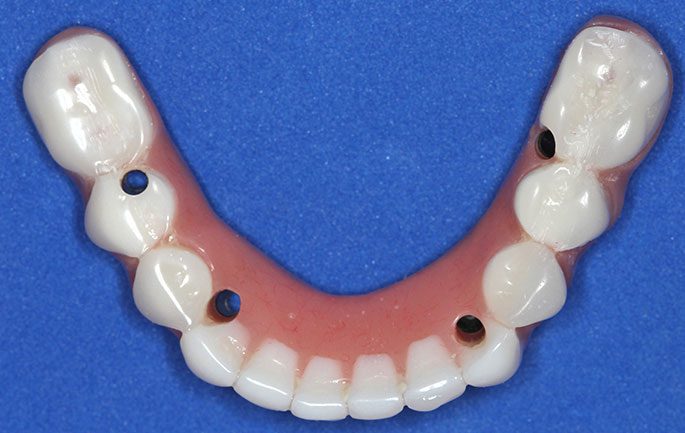
Lower, titanium/acrylic hybrid prosthesis. Titanium provides a strong skeleton and acrylic gives the prosthesis the beauty of teeth. Screw channels for securing the prosthesis to implants.
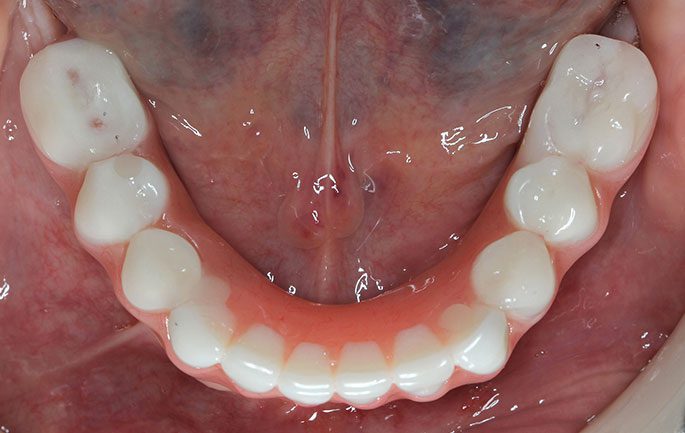
Titanium/acrylic hybrid (All-on-4) in mouth. The combination of upper zirconia and lower acrylic is the most biocompatible combination.
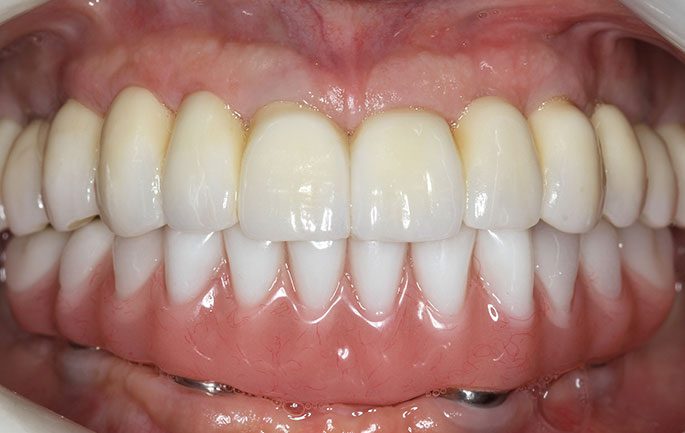
Frontal view of upper zirconia and lower titanium/acrylic prostheses. Again, this combination has been the very best (most biocompatible) for long term success. The lower acrylic is softer and wears faster than the upper zirconia thereby preventing chipping of the zirconia or acrylic breakage if the upper is done in titanium/acrylic. Note: the lower acrylic teeth are slightly whiter than the upper zirconia teeth to allow for some staining of the lower teeth over time. Acrylic will stain ½ shade. Zirconia will not stain.

